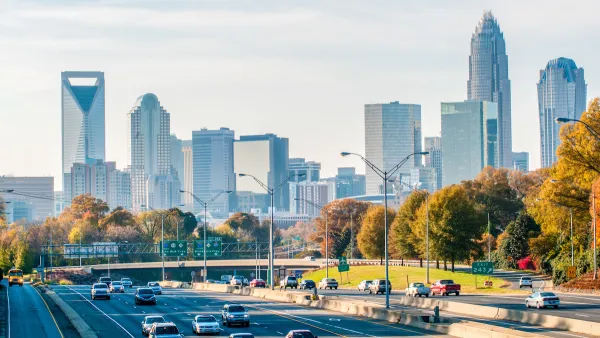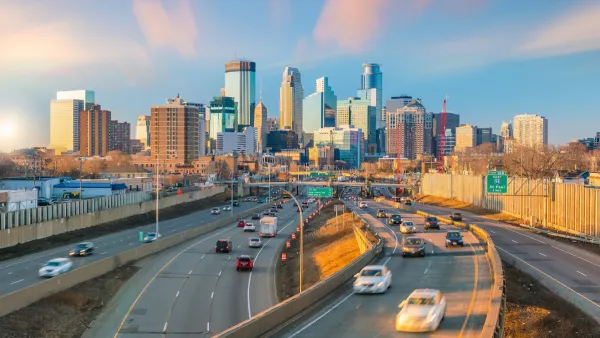A new study finds that the first decade of the 21st century exhibited a mass migration—of U.S. jobs moving farther away from where U.S. residents live.
"Between 2000 and 2012, the number of jobs within the typical commute distance for residents in a major metro area fell by 7 percent," according to a new Brookings Institution study. "Of the nation’s 96 largest metro areas, in only 29—many in the South and West, including McAllen, Texas, Bakersfield, Calif., Raleigh, N.C., and Baton Rouge, La.—did the number of jobs within a typical commute distance for the average resident increase. Each of these 29 metro areas also experienced net job gains between 2000 and 2012."
The report, by co-authors Elizabeth Kneebone and Natalie Holmes, defines "nearby jobs" as the number of jobs within a typical commute distance from the center point of that tract. "Typical commute distances" are based on the median commute distance in each metro area.
The study explains the numbers as a result of suburbanized employment—but even suburban residents were farther away from jobs as a result of the trend. "Suburban residents saw the number of jobs within a typical commute distance drop by 7 percent, more than twice the decline experienced by the typical city resident (3 percent)."
The post announcing the study on the Brookings website shares more of the study's key findings, including data about high-poverty and majority-minority neighborhoods.
FULL STORY: The growing distance between people and jobs in metropolitan America

National Parks Layoffs Will Cause Communities to Lose Billions
Thousands of essential park workers were laid off this week, just before the busy spring break season.

Retro-silient?: America’s First “Eco-burb,” The Woodlands Turns 50
A master-planned community north of Houston offers lessons on green infrastructure and resilient design, but falls short of its founder’s lofty affordability and walkability goals.

Delivering for America Plan Will Downgrade Mail Service in at Least 49.5 Percent of Zip Codes
Republican and Democrat lawmakers criticize the plan for its disproportionate negative impact on rural communities.

Test News Post 1
This is a summary

Test News Headline 46
Test for the image on the front page.

Balancing Bombs and Butterflies: How the National Guard Protects a Rare Species
The National Guard at Fort Indiantown Gap uses GIS technology and land management strategies to balance military training with conservation efforts, ensuring the survival of the rare eastern regal fritillary butterfly.
Urban Design for Planners 1: Software Tools
This six-course series explores essential urban design concepts using open source software and equips planners with the tools they need to participate fully in the urban design process.
Planning for Universal Design
Learn the tools for implementing Universal Design in planning regulations.
EMC Planning Group, Inc.
Planetizen
Planetizen
Mpact (formerly Rail~Volution)
Great Falls Development Authority, Inc.
HUDs Office of Policy Development and Research
NYU Wagner Graduate School of Public Service





























